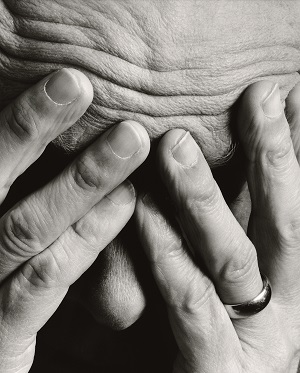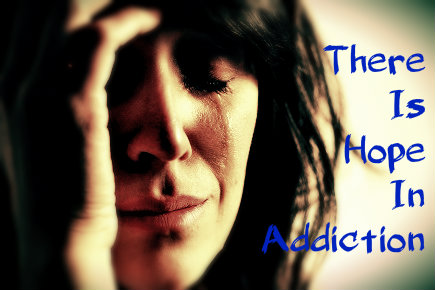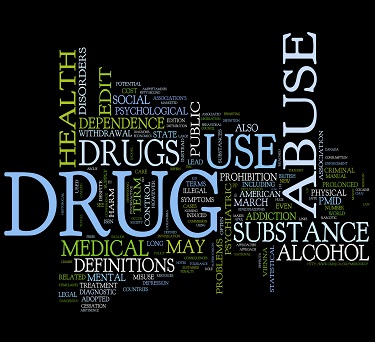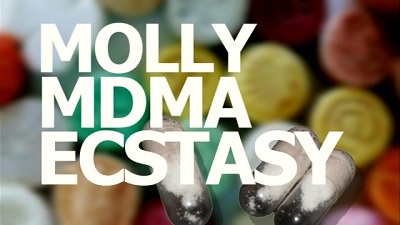09 Oct 2013
Baby Boomers And Addiction – Part 2
Continued from Baby Boomers and Addiction – Part 1
There may be nothing specific to baby boomers that puts them at a higher risk of addiction, but their numbers will challenge the system. In order to adequately meet the need, new treatment approaches are being developed. The New York Times articles “Advice on Addiction in Boomers” Part 1 and Part 2, answer readers’ questions on the issue of addiction in this demographic.
Dangers Of Senior-Related Addiction
People in this age group will experience the greatest risk for alcohol-related health conditions such as heart disease, kidney failure, and liver disease. They also face the risk of falls and alcohol-related injuries that are made more severe by age.
Boomer-Based Approaches To Treatment
 While people are people and addicts are addicts, the Baby Boomers have always been, to some degree, their own animal. This has inspired new approaches to treatment and recovery designed to take characteristics of this population into consideration in developing more effective approaches.
While people are people and addicts are addicts, the Baby Boomers have always been, to some degree, their own animal. This has inspired new approaches to treatment and recovery designed to take characteristics of this population into consideration in developing more effective approaches.
Dollars and energy naturally go to preventing drinking and educating about alcohol related dangers in the teenage and college population, but statistically, they are not the problem. Older adults often fly under the radar with their problem alcohol use. They assume, by virtue of being adults, that they have their drinking under control. They drink more covertly, it is accepted in their social circles or they isolate and are harder to keep track of.
The question naturally arises: what is the likelihood of recovery for individuals in this demographic? Is it possible to reform after so many years of consistent heavy use or abuse? Is it possible to ‘teach an old dog new tricks?’
According To Dr. Krantz:
“The longer an individual uses a substance, the more changes there are to the chemistry and the neuro-pathways in the brain. The brain essentially becomes re-wired as a result of substance use. In recovery, with abstinence, those pathways can begin to heal, regardless of how long a person has been addicted. Despite the healing of the brain, the disease is forever imprinted, which is why recovery needs to be a lifelong process.”
Concerns Of Adult Children
Boomer alcoholics are raising levels of concern among their adult children—those old enough to recognize a drinking problem and motivated to help their parents find recovery.
Often it is the adult children of substance abusers who are questioning and confronting the disturbing habits and seeking out treatment information for their parents. Thus information and support directed at children on how to help or deal their addict parents will also be needed in coming years.
Societal Impact Of Treating Aging Addicts
The primary concern is increased health care costs as a result of the need to treat a large group of addicts with expensive residential recovery programs. While the past years have seen a decrease in binge drinking and alcoholic patterns in younger generations such as the Millennials, there has been a marked rise in the boomer-aged adults that have been admitted to the hospital for binge drinking, or who have needed medical treatment for drinking related conditions and injuries. Alcoholism also has the potential to exacerbate other pre-existing health conditions thus requiring a higher level of medical care and prescription drug use.
What Can Adult Children Do To Help Addicted Seniors?
Adult children can begin by becoming aware of what constitutes alcohol abuse. According to the piece in The New York Times:
“Several readers asked how to determine if a loved one has an issue with alcohol. The Centers for Disease Control and Prevention defines heavy drinking, or alcohol abuse, as ‘a pattern of drinking that results in harm to one’s health, interpersonal relationships or ability to work.’ Alcohol dependence, also known as alcohol addiction or alcoholism, is a chronic disease with symptoms including ‘continued use despite repeated physical, psychological or interpersonal problems.’
Some other important questions to ask are: Why is he drinking? Is it a coping mechanism? Is it about more than just liking the taste of alcohol? Is he drinking to relax? Is he drinking more than intended? Can he stop at any time and stay stopped?”
Warning Signs Of Substance Abuse
The article provided a general list of red flags to look for when questioning one’s own drinking problem or that of another.
These are some signs and symptoms that often manifest in boomers suffering from substance abuse or addiction issues:
- Drinking begins to interfere with relationships
- Decision making becomes more difficult
- Dementia or falling are more prevalent
- Increased tolerance
- More health complaints
- Chronic pain (it is important to seek treatment somewhere that specifically addresses this issue)
- Mood swings and emotional distancing
- Behavior that is out of the ordinary (for example, someone who plays golf all the time has progressive isolation and begins to give it up)**
If an addict is committed to practicing an addiction and refuses to seek help, there is often little that spouses, children, and/or grandchildren can do to make recovery a reality. However, all attempts and possible solutions should be exhausted. The coming years promise to bring new pathways and solutions in treatment and recovery with the aim of providing hope to baby boomers who suffer from addiction.
**Credit: List taken from The New York Times article “Addiction in Boomers.”
08 Oct 2013
Baby Boomers And Addiction – Part 1
As our nation’s largest generational group reaches retirement, new concerns spring up around the mounting rates of addiction in this large and aging demographic. The baby boomer generation, by dint of sheer numbers, has long influenced the trends and direction of the U.S. in almost all areas of life. Though young people may have the corner on the cutting edge, it is the people born post World War II between 1946 and 1964 that either respond or don’t respond to the prevailing culture. How are the patterns and needs of baby boomers in addiction and recovery shaping the field of treatment and rehab? How do we handle addiction in an aging population? What special approaches should be taken?
Spare Time – Anxiety, Depression And Alcoholism
 As baby boomers progress in the life cycle, professionals are seeing them forge wide paths into the realm of substance abuse, primarily alcoholism. As this population ages and retires, they face obstacles not nearly so prevalent in their parents’ generation. Many, for example, will live many years beyond retirement—how will these years be spent? Many have poured themselves into careers with workaholic ardor—now what shall be done with the spare time? Rates of anxiety and depression have also skyrocketed among boomers, making them a fertile breeding ground for substance and process addictions.
As baby boomers progress in the life cycle, professionals are seeing them forge wide paths into the realm of substance abuse, primarily alcoholism. As this population ages and retires, they face obstacles not nearly so prevalent in their parents’ generation. Many, for example, will live many years beyond retirement—how will these years be spent? Many have poured themselves into careers with workaholic ardor—now what shall be done with the spare time? Rates of anxiety and depression have also skyrocketed among boomers, making them a fertile breeding ground for substance and process addictions.
And now the challenge faces medical and mental health professionals: How to meet the mental health and addiction treatment needs of the aging baby boomers? What trends will arise and what challenges will manifest?
Recently, The New York Times addressed the issue in its health section through a two-part Q&A with Dr. Barbara Krantz, medical director of an addiction treatment center in Florida. “Advice on Addiction in Boomers,” Part 1 and Part 2, were responses to questions from individuals concerned about their own drinking patterns or those of a partner, as well as adult children unsure of how to handle parental alcoholism. Krantz describes some of the unique needs, challenges and solutions surrounding the issue of addiction in the baby boomer population.
Unique Patterns And Needs In Baby Boomers
While the fundamental recovery principles are essentially universal and change little from person to person or generation to generation, professionals in addiction and recovery recognized that boomer addicts could benefit from a treatment plan that was more holistic in its approach—one that aimed to speak to them and their unique perspective, cultural mindset, and experiences.
Dr. Krantz details the rationale behind the development of a treatment approach geared specifically to baby boomers:
“We created a specific program for baby boomers because their socialization and culture created unique issues that need to be addressed. Many boomers grew up at a time when there was a cultural acceptance of drugs and alcohol. It was a time when authority was questioned and knowledge was sought. Woodstock, the Vietnam War and other important generational elements are critical to note in treating them. It’s also important to approach boomers on an intellectual level. They need to fully understand why we approach treatment the way we do, because they search for knowledge and understanding rather than passively accepting authority.”
Addictions Beginning Later In Life
While many boomers perhaps never manifested addictions in mid life, the retirement years often present a fertile breeding ground for the development of an addiction or the exacerbation and escalation of what might have been previously termed “heavy drinking.” New stresses arise at this age. Marital problems come to the forefront when the children have finally left the nest. There are economic strains resulting from a depressed economy, late in life job loss, uncertainty about Social Security and how long retirement funds will last, hormonal changes, the illness or loss of a spouse, scattered social connections leading to isolation and loneliness, the unstructured schedule of retirement life, and the perceived loss of one’s sense of purpose. The rise of depression and anxiety is also a factor. Significant numbers of baby boomers are taking prescription drugs in an attempt to manage one or both of these conditions.
Untreated mental illnesses as well as the life conditions listed above have frequently led boomers to turn to a substance or process addiction for “support.” Certainly, as a demographic, they are not unique in this—people have been turning to alcohol to deal with the stresses and tragedies of life for centuries. But because of the greater size of this age group, treatment professionals face greater numbers of incoming patients.
07 Oct 2013
Naltrexone Limits Drug Cravings, Urges
It can feel overwhelming to make the necessary decisions regarding drug rehab treatment. You likely have many questions, from how long treatment will last to whether rehab will work. One of the decisions you may need to make is whether the medication naltrexone is the right therapy for you or an addicted loved one.
Naltrexone is a prescription drug used to treat both alcoholism and opioid addiction. Common brand names include Depade and ReVia. A once-a-month injectable form, called Vivitrol, is also available. This drug is often prescribed for a period of time ranging from a few months to a year. It may also be prescribed if a recovering drug addict starts experiencing cravings again or will be exposed to an environment where the urge to use will be intense.
How Naltrexone Helps Drug Cravings
Opioids, like heroin, oxycodone and hydrocodone, are drugs that slow the body’s central nervous system activity and induce feelings of pleasure. Naltrexone is an opioid receptor antagonist, which blocks the effects these drugs have on the brain. In other words, the drug takes away the intense high. The medication does not stop a person from doing drugs when he or she is actively using. It also will not stop or relieve withdrawal symptoms. However, its ability to block the euphoric high makes substance abuse less attractive to the addict.
Some studies have shown naltrexone to be effective at helping addicts prevent relapse. However, it’s important to note that the medication was used in conjunction with other addiction treatments, including cognitive behavioral therapy. In one study, naltrexone was combined with counseling and addiction education for significant others to increase the addicts’ success rates.
Naltrexone is sometimes used in a process called rapid detoxification, which, as the name implies, is a method of speeding up detox. This must be done under strict medical supervision due to the risks involved. It is performed while the addict is under general anesthesia or sedation.
Before Taking Naltrexone
The drug’s primary use, however, is to prevent recovering addicts from experiencing the high that reinforces their continued use. This effective drug rehab treatment medication cannot be taken if a person is still using opioid drugs. As a general rule, an addict needs to be clean for at least seven to 10 days before starting naltrexone therapy. It’s common for the prescribing physician to order blood tests to ensure that there’s been no recent drug use.
Before taking this medication, addicts must go through detoxification if they haven’t already stopped using. Once they are clear of opioids, a physician will prescribe a low dose that will then be adjusted as necessary. Naltrexone should be taken on the prescribed schedule: daily, every other day, or every third day. It is often delivered in a clinical setting, but some addicts may be able to take it at home if supervised by a responsible family member.
Like any prescription medication, naltrexone does carry the risk of side effects. Most of the potential side effects are relatively mild. Users have reported headaches, drowsiness, upset stomach, vomiting, diarrhea and muscle aches. The prescribing physician will provide a complete list of side effects and may be able to offer tips for reducing them. Naltrexone should not be taken by those with liver disease, acute hepatitis, or kidney disease, or women who are pregnant or breastfeeding.
Because this medication for drug addiction prevents opioids from working, it’s important to let your physician and any other health care providers know that you cannot take any opioid-containing medications. These include certain pain medicines, diarrhea medications and cough syrups.
Disadvantages of Naltrexone
While naltrexone can be an effective tool for drug rehab treatment, there are drawbacks. For instance, it works only when taken exactly as prescribed. Addicts with the urge to use often stop taking the drug or skip doses so they can use again. Others forget to take it. One study showed that heroin addicts who were supervised almost daily while taking the medication had better recovery rates than those who were supervised only three or four days a week.
Some addicts are hesitant to take it because they prefer to be entirely drug free. However, it’s important to remember that naltrexone is not a narcotic; nor is it a drug substitute therapy, like methadone. You can’t become addicted to naltrexone or get high from it. Using this medication is much like using a prescription to control other chronic disorders, such as diabetes or high cholesterol.
There’s another potential danger linked to the use of naltrexone. Since the drug blocks the high that comes from opioid drugs, some addicts may try to “get around” the medication and attempt to get high by taking larger-than-typical hits of their drug of choice. This is extremely dangerous because it can lead to overdose and, potentially, death.
Naltrexone And Addiction Treatment
This use of naltrexone as part of drug rehab treatment is not a magical cure; it can’t eliminate your addiction by itself. Rather, it’s just one more tool in a long-term strategy for recovery. Think of this medication as a way to clear your mind so you can build the healthy physical, emotional and cognitive foundation needed to maintain an addiction-free life.
As part of your treatment, you will be required to participate in individual or group addiction counseling. A trained therapist will help identify the factors that have contributed to your addictive behavior. Once those triggers are established, you will work to find healthier ways to cope with those emotions and behaviors.
Addiction professionals may recommend other tools as well. A support group, often in the form of a 12-step program, can be a powerful treatment strategy. By working with others who have experienced the same struggles, you will learn new ways to maintain recovery. Just as importantly, a good support group provides connections with others who understand exactly the challenges you are experiencing.
Finding support from family and friends is also crucial to recovery. Your addiction treatment team may recommend family or couples therapy to address relationship issues that contribute to your drug abuse. You’ll learn to identify sources of conflict as well as develop strategies for resolving them in a healthy and constructive way.
Naltrexone can be one part of a successful drug rehab treatment strategy. Talk to an addictions specialist to determine if this medication will help you on your road to recovery. It may be the extra tool you need to build a life free from the strain and dangers of addiction.
In order to fully and accurately evaluate the global impact of various diseases and harmful health conditions, researchers in the United States and Australia analyzed extensive medical data collected from more than 180 countries representing every geographical region on the planet. Working under the auspices of the 2010 Global Burden of Diseases, Injuries and Risk Factors Study, these investigators were able to compare and contrast a wide range of medical conditions, and after crunching all of the numbers, they discovered that mental health and substance use disorders are now the world’s leading cause of non-fatal disease.
 For the purposes of this study, 20 different conditions were categorized under the mental health and substance use disorder umbrella, including depression, drug and alcohol abuse, idiopathic intellectual disabilities, and all known anxiety, childhood behavior, and pervasive development disorders. A study such as this would have been difficult to perform in the past since legitimate statistics on mental health disorders were often sparse or non-existent, especially in the developing world, but, fortunately, global awareness about mental illness has grown to the point where these conditions are now being recognized and diagnosed everywhere with much greater accuracy.
For the purposes of this study, 20 different conditions were categorized under the mental health and substance use disorder umbrella, including depression, drug and alcohol abuse, idiopathic intellectual disabilities, and all known anxiety, childhood behavior, and pervasive development disorders. A study such as this would have been difficult to perform in the past since legitimate statistics on mental health disorders were often sparse or non-existent, especially in the developing world, but, fortunately, global awareness about mental illness has grown to the point where these conditions are now being recognized and diagnosed everywhere with much greater accuracy.
A Closer Look At Mental Health And Substance Abuse
In total, the conditions grouped together under the mental health and substance use disorder classification accounted for 22.8 percent of the global non-fatal disease burden, making them a greater factor for serious illness than such highly-publicized health problems as HIV/AIDS, diabetes and tuberculosis.
Breaking that 22.8 percent down into specific conditions, depressive disorders are easily the most common type of mental health problem experienced, accounting for 40.5 percent of all of the incidences reported. This means that depression alone is responsible for more than 10 percent of the global burden of non-lethal disease.
Next in line in frequency of diagnosis within the mental health/substance abuse group are:
- Drug and Alcohol Addiction (20.5 percent)
- Anxiety Disorders (14.6 percent)
- Schizophrenia (7.4 percent)
- Bipolar Disorder (7.0 percent)
- Pervasive Developmental Disorders (4.2 percent)
- Childhood Behavioral Disorders (3.4 percent)
- Eating Disorders (1.2 percent)
When the statistics for fatal and non-fatal illnesses are combined, mental health and substance use disorders are the fifth leading cause of death or serious disease across the globe. Naturally the incidence of specific mental conditions plus drug and alcohol addiction varies by geographical location, but there is no country or region of the world where common mental health problems and substance use issues are unheard of or insignificant in their levels of occurrence. The incidence of all mental health problems is higher in women and girls than in men and boys, but the inverse is true with respect to substance abuse.
Mental Health – Global Problems And Individual Solutions
While global statistics on mental health troubles and drug and alcohol addiction provide a useful overview of the situation, ultimately each individual nation-state will be forced to deal with the consequences of these conditions largely on its own. And unfortunately, in every single country, mental illness and substance abuse are placing significant financial and personnel burdens on health care systems that are already chronically undermanned and/or underfunded. In the developing world, shortages of trained medical professionals who are capable of providing effective and efficient mental treatment services are a constant problem, while in both developing and developed nation the high cost of treatment and rehabilitation often prevents suffering people from getting the attention and assistance they so desperately need. Complicating the picture further is that mental illness still too often goes undiagnosed, most frequently among the poor, and, in the case of substance abuse, even when individuals do manage to get treatment, the failure rate of this type of rehabilitation is discouragingly high.
In the past, mental illness carried a stigma that tended to prevent suffering people from coming forward and asking for help, or from admitting that they had a problem in the first place. Fortunately this situation has changed and changed dramatically, and that provides great reason for optimism and hope. Financial challenges that restrict the availability of quality mental health care for all are real and pervasive; however, as awareness of the depth of the problem of mental illness and substance abuse continues to spread, government agencies and public health officials in nations all across the planet will have little choice but to acknowledge reality and bring their funding priorities into line with the real needs of their citizens.
Stories appear in the news on nearly a daily basis describing a trendy new drug, the explosion of a meth house, overdose deaths or some other tragic event due to drugs, alcohol and addiction. It can be hard to take away the real facts from these stories. To know what is really happening in the U.S. when it comes to drug and alcohol abuse, statistics and solid facts are helpful.
 Every year the National Survey on Drug Use and Health (NSDUH) questions a random selection of close to 70,000 Americans. All participants are 12 years and older and the purpose of the survey is to estimate how many Americans are using various illicit drugs, prescription drugs, alcohol and tobacco, and how they are using them. To get accurate data in this way helps with the implementation of preventive programs and treatment offerings for substance abusers. The study is conducted every year so that trends can be established.
Every year the National Survey on Drug Use and Health (NSDUH) questions a random selection of close to 70,000 Americans. All participants are 12 years and older and the purpose of the survey is to estimate how many Americans are using various illicit drugs, prescription drugs, alcohol and tobacco, and how they are using them. To get accurate data in this way helps with the implementation of preventive programs and treatment offerings for substance abusers. The study is conducted every year so that trends can be established.
The most recent NSDUH provides data for 2012. The latest results of the survey give a picture of drug and alcohol use in the U.S. that some may find surprising. Trends in the use of specific drugs show which are decreasing and which are exploding in popularity. The results also show trends in the ages of drug users, the prevalence of binge drinking and attitudes toward smoking.
Binge Drinking On The Rise
Binge drinking is on the rise and is considered a type of substance abuse. The Centers for Disease Control and Prevention define binge drinking as having five or more drinks within a two-hour period for men, and four or more for women. This level and rate of drinking elevates a person’s blood-alcohol content to 0.08.
According to the NSDUH data, more than half of Americans are drinking. That represents over 130 million people. Of those, one quarter, or around 60 million people, binge drink. Not only does binge drinking have serious health consequences over the long term, it can also result in immediate problems, such as drunk driving and accidents.
Spike In Heroin Use
Methamphetamine, commonly called crystal meth, speed, or just meth, is a dangerous, destructive and highly addictive drug. Not only does the drug destroy lives through addiction and health problems, the way in which much of it is made has harmed or killed people. Meth is a drug that can be made with household chemicals and drugstore buys. For this reason, a decade ago, meth labs cropped up around the country and came with poisoning fumes and accidental explosions. The good news from the survey is that use of meth is decreasing. Nearly 731,000 people used meth in 2006, and for 2012 the number dropped to 440,000.
The bad news is that use of heroin is rapidly rising. Another very serious drug, heroin is extremely addictive and has the potential to cause an overdose on the first try. The number of Americans using heroin, according to NSDUH, doubled between 2007 and 2012, from 373,000 to 669,000.
Drug Use Among Baby Boomers Is Increasing
Drug use among the baby boomer generation is on the rise. Compared to a decade ago, the number of adults between the ages of 50 and 64 using drugs doubled. Among those aged 55 to 59, the rate tripled. Americans in this age group were young during the 1960s when drug use exploded. As they age, these people are still using drugs to some extent. They are using more than the generation before them ever did.
Having accurate information from the NSDUH is crucial in developing policies, substance abuse prevention plans and treatments for addicts and abusers. The survey information provides an accurate glimpse of what Americans were doing in 2012 and also how behaviors are changing. Some of the news was good: the number of teenagers smoking cigarettes has been cut in half over the last 10 years. Some news, though, like the explosion of heroin use, is less promising.
The legalization of marijuana in many states has led to increased availability and experimentation. While many individuals with chronic pain related to a serious injury or illness attest to its medicinal uses, there are still concerns about the recreational use of the drug.
Research has shown marijuana to be a “gateway drug” because experimentation and recreational use can give a user access to more dangerous drugs that carry a higher likelihood of addiction and more serious side effects.
Marijuana Users Experiencing Psychosis Even After Use
Another important concern related to marijuana is research connecting its use to ongoing psychotic episodes. Some studies have shown that users can experience psychosis, not only while under the immediate effects of the drug but for extended period following use.
When teens begin using marijuana, however, the risks may multiply. Teen brains are still developing and any substance use can interrupt the important processes occurring in the structures of the brain, causing long-term cognitive impairment.
 A study led by Willemijn A. Van Gastel of the Rudolf Magnus Institute of Neuroscience at the University Medical Centre Utrecht in the Netherlands examined the effect of marijuana on mental health. While many studies have documented the connection between psychological problems and marijuana use, it is unclear whether cannabis use leads to an increased risk of mental disorders or if those with mental health problems are more likely to use cannabis.
A study led by Willemijn A. Van Gastel of the Rudolf Magnus Institute of Neuroscience at the University Medical Centre Utrecht in the Netherlands examined the effect of marijuana on mental health. While many studies have documented the connection between psychological problems and marijuana use, it is unclear whether cannabis use leads to an increased risk of mental disorders or if those with mental health problems are more likely to use cannabis.
The findings were published in Psychological Medicine.
The study analyzed surveys administered to over 10,000 students aged 11 to 16. The questions on the survey requested information about substance use, including cannabis, alcohol and cigarettes.
The students were also asked about other aspects of life, including whether they had experienced any problems at school or if there was any conflict at home. They were also asked about whether there was any history of molestation and other environmental risk factors for mental health symptoms.
Multiple Problems In School And Behavior Associated With Marijuana Use
The results of the analysis showed that there was an association between marijuana use and psychosocial problems. When other risk factors were taken into account, however, the association was not as strong. In addition, there were risk factors that were associated with negative psychosocial outcomes that were also associated with increased levels of marijuana use, including behavioral problems at school, missing school due to illness, truancy and alcohol and cigarette use.
The authors of the study believe that the presence of substance use, low self-esteem and difficulties with mood disorder symptoms could lead to psychosocial problems and marijuana use.
The researchers were surprised to find that there was no evidence of a relationship between the level of marijuana use and the level of poor outcomes in psychosocial measures. This suggests that the risk factors are a critical component in determining whether marijuana use leads to other negative outcomes.
Can Marijuana Use Indicate If A Teen Might Be At Risk For Mental Health Problems?
The authors note that the findings can be understood as a way to predict future negative behavioral and overall psychological and psychosocial wellbeing. In other words, marijuana use can indicate whether a teen might be at risk for mental health problems.
Drug Prevention And Education To Reduce Risk Of Substance Abuse
The findings are helpful for targeting teens that may be in need of prevention and education efforts to improve mental health and reduce the risk of additional substance use. Screening teens for substance use may also help identify possible areas of high risk for mental disorders.
While marijuana is often considered a harmless substance when used in moderation, many of the effects of the drug are not fully explored. Parents are encouraged to talk openly and often with their teens about the risks associated with marijuana use, including the possibility of mental disorders.
Searching for the ultimate high, teens share drugs, mix drugs and succumb to the ill after-effects that drugs impose on them. They are often smart enough to know that the drug will make them feel awful after the high has worn away, but addiction doesn’t respond well to this reasoning. To truly break a drug addiction, teens need professional guidance and treatment.

Courtesy of: www.pentagonpost.com
Molly, also known as ecstasy or MDMA, promises teens an exhilarating feeling. In an NBC news report, one young man said that he was lured by the intense high that Molly gave him. He was looking for something new and someone suggested to him that Molly was like a new form of the drug ecstasy.
MDMA’s Short High And Dangerous Side-effects
His first encounters with Molly made him feel great. He said that the drug made him feel very happy and excited. He felt on top of the world and it was exactly what he was looking for. But the happiness didn’t last long and the young man soon realized that the short time he was high came with a long sentence of feeling completely worn out, both physically and mentally.
When teens search for a great high, they don’t think about the ill effects the drug may cause. Part of that comes from living in the moment and not worrying about the consequences. Some might even say the consequences are worth it. But over time, the consequences get more intense, and like a wheel racing downhill they can’t find a way to stop, event when the consequences become too overwhelming and change their life for the worst.
When self-esteem plummets and fatigue becomes overwhelming, some teens may try to stop using by themselves. Molly causes withdrawal symptoms like heavy sweating, overheating, high blood pressure, extreme dehydration and in some cases death. It can also affect teens psychologically, sometimes causing short term psychosis.
How Addiction To Molly Takes You To A New Low
The young man who was interviewed by NBC said that he knew he was letting Molly control him when he started selling his child’s toys in order to get money for drugs. He could not believe the person that he had become and how his need for the drug had changed him so much. He had also been lured by the media, knowing that popular movie stars and musicians were using the drug.
Recovery From The Lows Of Molly
The only way he was able to break free from Molly was through a treatment center that guided him back into better mental and physical health. Through his experience he cautions teens to stay away from the lure of that high that inevitably and impersonally drops you off into the lowest low.



